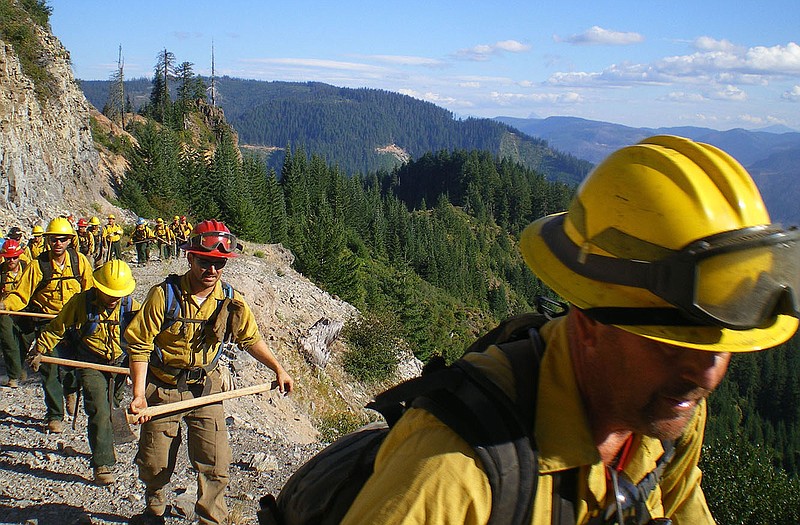Missouri firefighters traveled across the country to help contain and extinguish wildfires in the Pacific Northwest.
Missouri Department of Conservation (DOC), along with some others from surrounding states, helped develop an out-of-state fire program in the mid-'70s with agreements between the U.S. Forest Service, the National Park Service and the Bureau of Land Management, said Ben Webster fire program supervisor for the DOC.
"When fires are intense out West and exceed the capacity of the state's capabilities, we make some of our firefighters available," said Mike Huffman, DOC outreach and education division chief. "Our crews get valuable training experience in wildfire suppression that they can use here at home. They (wildfires) mainly occur in the southern part of the state, and they (other states) are also available to assist us if we need it."
This year the DOC has sent 30 firefighters to fires in northern California, Oregon, Idaho and Montana. Usually the people sent are working in fire crews who are on the front line of the fight against the fires, or they are sent to fill a single resource position that are commonly leadership roles that command or manage fire crews, Webster said.
Webster is a Jefferson City local who recently returned from a trip to Middle Fork Ranger District of the Willamette National Forest in Oregon. Working to contain a several wildfires, he and his crew dealt with steep and rocky terrain over smoke covered valleys to fight series of fires spread over 750,000 acres that were caused by lightening storms.
"This is a voluntary program; we don't make any of our folks do it," Webster said. "The guys and gals that are doing it have an interest in fire ... so everybody that signs up for it knows the risk. We have a lot of experienced people and there are a lot of people watching out for us because we know there are a lot of threats out there."
The crews would be deployed on "search and destroy" missions after an aircraft or fire tower would spot smoke. Once at the scene, they would use shovels and chainsaws to make trenches that were roughly 18 inches deep and two feet wide to contain the fire, and decide what is needed to combat the widening infernos.
The volunteers have to maintain national and state standards for physical fitness, and they are paid their normal salaries from the DOC while deployed. Their salaries are reimbursed by the U.S. Forest Service, so the state is able to make money from the program, as well as save lives.
The group posted some of the photos on Facebook, which followed with a mass of comments thanking them for their service.
"Thank you so much for your efforts!" commented Jane Madden from the University of Missouri. "As a former resident of Colorado Springs I know how important it is for all states to send firefighters where they are needed."
To view the pictures go to facebook.com/MDCOnline.

